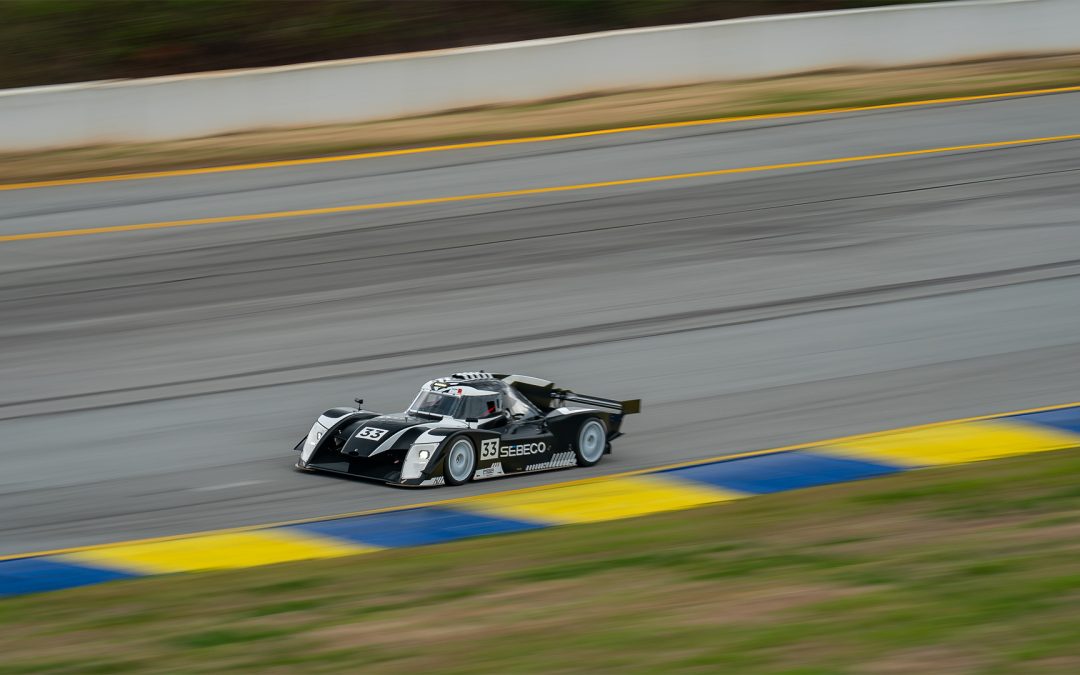What is Porpoising?
You may have felt the sensation of your car jumping up and down on a long straightaway or had the sensation that the front of the car is bouncing coming into a braking zone. This sensation is called porpoising. Simply put, porpoising is the result of downforce pulling the car close to the ground and blocking off airflow. This causes the car to temporarily lose downforce and spring back upward to re-start the cycle again. Below is a clip of Stratus Racing experiencing porpoising on the front straight at Road America.
What causes porpoising in a Sebeco Prototype
All current instances of porpoising in a Sebeco Prototype have been traced back to the splitter. Unlike F1 cars, which experience porpoising from their underbody aero forcing the car too close to the ground, the Sebeco NP01’s issue arises from the splitter experiencing slight deformation at high-speed forcing it to close off airflow under the car and induce porpoising.
Is Porpoising Bad?
While porpoising in a Sebeco prototype is not as severe as in an F1 car, porpoising can cause excessive wear to your splitter over time, which will in-turn increase the sensation of porpoising. Porpoising can also reduce the car’s straight-line speed and make it harder for a driver to stay consistent over the course of a lap.
How to stop porpoising in a Sebeco Prototype
Increase ride height
At 1700 lbs, we recommend teams setup their car no lower than 72 mm in the front and 74 mm in the rear. Measurement should be taken from the bottom of the floor. At bumpy tracks like Sebring or NOLA Motorsports Park, it is recommended drivers increase ride height by 6-7 mm in the front and rear to reduce the risk of rubbing or porpoising.
Ensure your splitter stays are tight enough
Over time, the six splitter stays (3 per corner) on the front of the splitter can become slack. Stays being excessively loose will almost certainly cause porpoising as there is no resistance keeping the splitter from deforming under heavy downforce conditions. To tighten the stays, we recommend teams remove the nose of the car but leave the fenders on and then tighten the stays until there is light tension in each of the three lines when re-connected to the splitter.
Replace the aluminum brace in your splitter
When the NP01-Evo splitter has been experiencing porpoising for an extended duration, the aluminum brace that runs across the front of the splitter will develop a kink in the middle. This can be evidenced by seeing a slight bow in the wooden splitter base when looking under the car. Replacing this brace will minimize the effects of porpoising but should also be paired with tightening the stays and the installation of a splitter brace to ensure more porpoising doesn’t occur.
Install a splitter brace
Sebeco has developed two new braces – one for the optional carbon fiber SPX splitter and one for the standard NP01-Evo splitter. The brace for the carbon splitter is bolted between the upper and lower skins and the NP01-Evo brace spans between the leading edge of the front impact structure and wood splitter base and is secured with 10/32 hardware.
Upgrade to a Sebeco Rev 2 Carbon Fiber Splitter (Not Spec Legal)
Sebeco’s Rev 2 Carbon Fiber Splitter offers enough rigidity to completely eliminate the risk of porpoising with minimal maintenance. The Rev 2 splitter is made from a thicker carbon fiber laminate than the original version and features as standard the splitter brace and protective pucks underneath the splitter. Stratus Racing has been campaigning this version of the splitter since July 2023 and has reported zero issues relating to porpoising since its implementation. This splitter now comes standard on all SPX cars and NP01-EVOs with the performance package option. The carbon splitter option is not NASA spec legal but can be used in ST NASA classes, WRL, and PSSA racing.
Install protective splitter pucks (Carbon Splitter Only)
Regardless of whether a team is experiencing porpoising or not, Sebeco recommends all cars run with three Jabroc splitter pucks mounted to the underside of the splitter (pictured below). While these pucks are standard on all new car builds, owners of previous car builds can purchase and install these pucks to protect their car’s floor from rubbing. It is recommended that owners inspect these pucks every few weekends and replace them when they have become worn down to a quarter of their original thickness.

